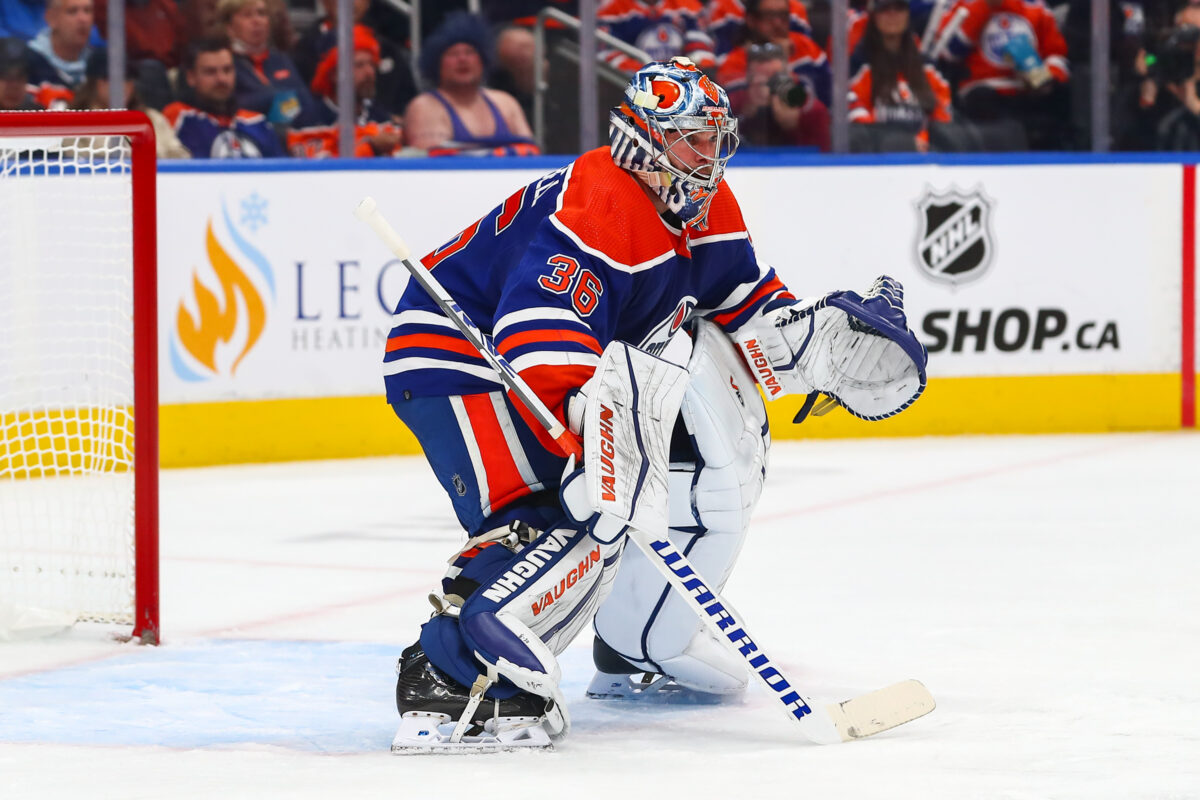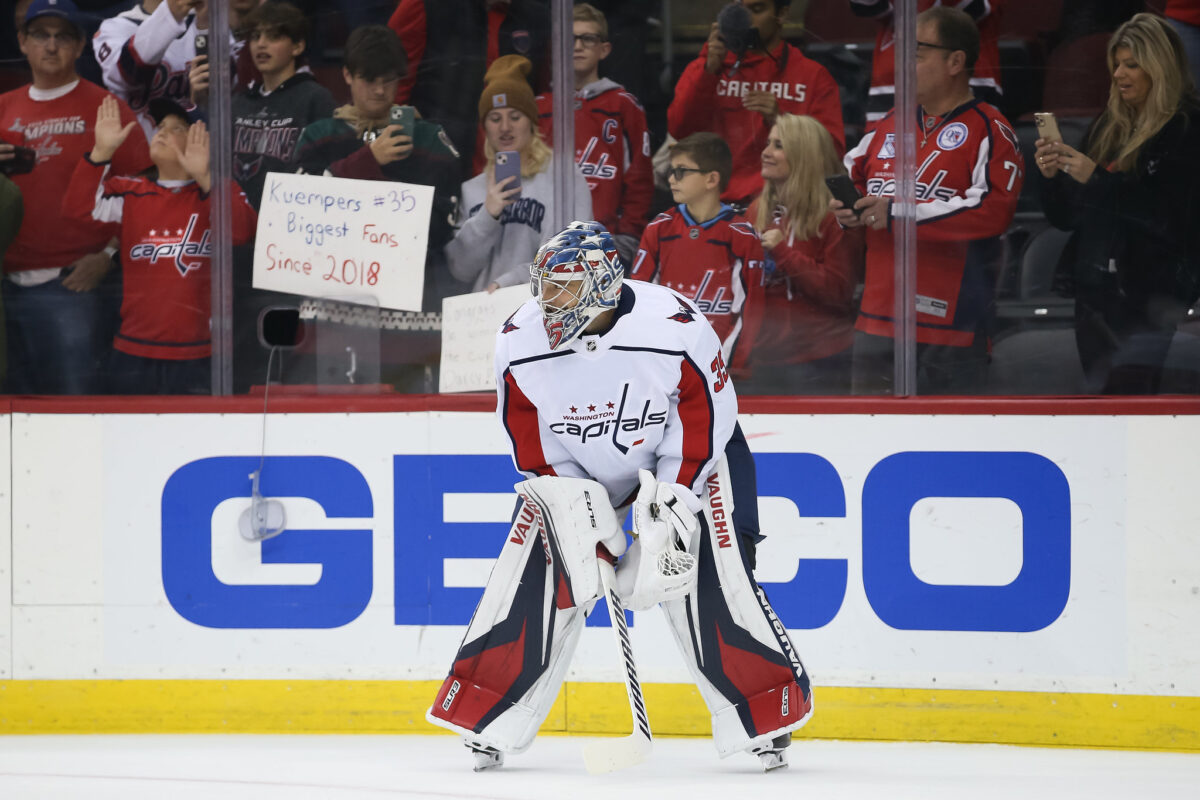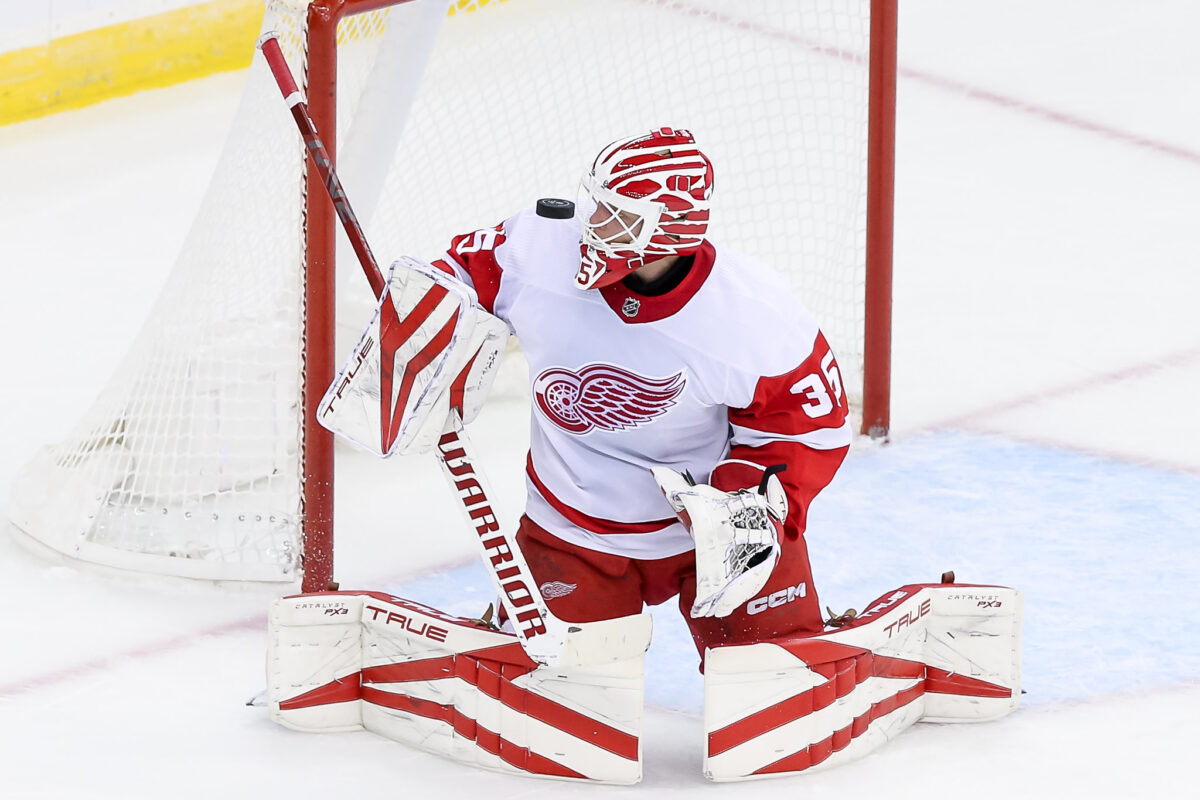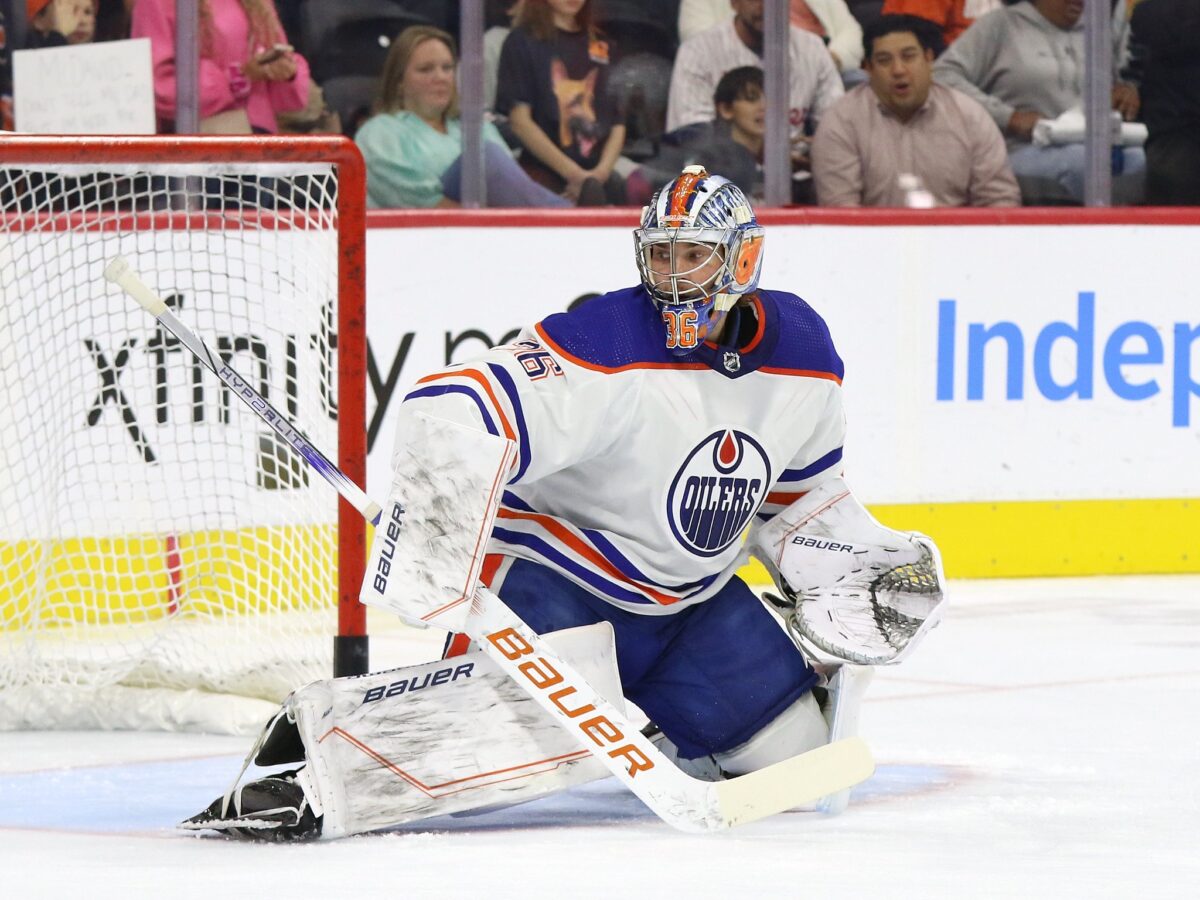The summer of 2022 was a crucial one for the Edmonton Oilers. Coming off a trip to the Western Conference Final, general manager (GM) Ken Holland’s primary task was to acquire a new starting goalie after the departure of Mikko Koskinen to Finland and the unofficial retirement of Mike Smith. Holland signed Jack Campbell to a five-year deal with an average annual value (AAV) of $5 million. Less than a year and a half into Campbell’s contract, he has been waived and sent to the American Hockey League (AHL). It’s been an absolute disaster at a critical time for the franchise.

How did the Oilers come to a decision that fateful summer that Campbell was the answer between the pipes? Were there any red flags that they turned a blind eye to? What were the other options? In this piece, I will revisit the 2022 class of free-agent goaltenders to attempt to answer these questions.
Oilers’ Top Free Agent Options
After a good 13-game showing in 2021-22, The Oilers had Stuart Skinner penciled in as the backup or ‘1B’ option. They were specifically looking for a goalie who could play 50 games, give or take. The only options on the market that summer who had success in a 1A or starting role were Ville Husso, Jack Campbell, and Darcy Kuemper. The Oilers had expressed interest in all three, leading up to free agency. The Detroit Red Wings traded for Husso, who immediately signed a three-year extension. The Washington Capitals signed Darcy Kuemper for five years, and Campbell ended up in Edmonton on a five-year deal. Their AAVs were as follows:
- Husso: $4.75 million
- Campbell: $5 million
- Kuemper: $5.25 million
Comparing Kuemper, Campbell, and Husso
Skinner was entering 2022-23 relatively unproven in the NHL. He had a lot of promise, but the Oilers were vocal about their desire to acquire a 50-game goaltender. Kuemper fit that bill, as he had played over 50 games in a season twice, including the most recent 2021-22 season. Campbell had never reached the 50-game mark, having only played more than 35 games once, and Husso also had no experience playing 50 games or more in an NHL season.

Kuemper was the most experienced as a starter by far. Earlier this season, Daniel Nugent-Bowman reported that the Oilers “felt Campbell was the more consistent […] had higher peaks in performance and better rebound control. They felt more comfortable in Campbell’s durability, too” (from ‘What I got wrong: Jack Campbell hasn’t given Oilers a goaltending upgrade’ The Athletic, March 21, 2023). Let’s break down each of these criteria.
Campbell’s Consistency
If the Oilers were looking for consistency, Kuemper fit that bill the best. He achieved a positive goals saved above expected (GSAx) for five consecutive seasons and a save percentage (SV%) above .900 in every one of his NHL campaigns. On the other hand, Campbell had wild swings between brilliant and horrific stretches of hockey. Look no further than his final seven months with the Toronto Maple Leafs.
Campbell was in the Vezina Trophy conversation in December 2021, with a .937 SV% through his first 23 games of the season. However, it was all downhill from there. His SV% plummeted to .893 in the second half of the season, and he had an unremarkable first playoff round against the Tampa Bay Lightning. Besides the shortened COVID season in 2020-21, Campbell has never had an entire NHL season of consistent results. Husso had a fantastic 2021-22 leading up to free agency, but his play also dipped toward the end. Kuemper was the clear winner in the consistency department, not Campbell.
Campbell With the Highest Ceiling?
The other set of criteria the Oilers thought made Campbell an ideal candidate was that they believed he had higher peaks in performance. Campbell put together three prolonged hot streaks in his NHL career that I consider peaks in his career. In his 31 games with the Los Angeles Kings in 2018-19, he achieved a GSAx of 10.7, good for 10th in the NHL. His next brilliant run came in 2021, when Campbell shut the door on the rest of the North Division, posting a GSAx of 8.4, which was seventh best in the league. His performance’s third and final peak was the aforementioned first half of the 2021-22 season.

Like Campbell, Kuemper also had a few fantastic stretches in his career. The first 20 games of his 2019-20 season with the Arizona Coyotes are notable, as he managed to maintain a .937 SV%, the same as Campbell’s in his 2021 first half. Kuemper’s biggest hot streak is a 2022 run from February to March in which he posted an incredible .939 SV% in 17 games and finished the season with a GSAx of 21, almost double Campbell’s career high in a season.
Husso had only one notable peak in performance, which came in the middle of the 2021-22 season. He posted a .948 SV% in 12 games, making it a brief streak that undoubtedly made him a lot of money in the following contract.
Related: Oilers on Verge of Big Changes: Have “Turned Page” on Goalie
Once again, I’m afraid I have to disagree with the Oilers’ assessment here that Campbell had the highest peaks in performance. We saw just as impressive stretches from Kuemper more frequently and for more extended periods.
Campbell’s Strengths
Rebound control was highlighted by Oilers management, and clearly, that played a significant role in signing Campbell. He was consistently among the better goaltenders in the league in limiting rebounds, unlike Husso and Kuemper. His durability was also better than Kuemper’s over the previous few years. Kuemper had an extensive injury history, while Campbell was rarely kept out of the lineup.
Should the Oilers Have Seen Campbell’s Downfall Coming?
The risks of signing Campbell to an expensive long-term deal greatly outweighed the reward, and the Oilers should have had alarm bells going off during their research into Campbell. Their assessment of him as the most consistent of the available starting goalies with the highest ceiling simply wasn’t accurate. And while he did have good rebound control, his inability to stop high-danger chances at anywhere close to the NHL average rate should have been worrisome. It came back to haunt an Oilers team that has given up a lot of high-quality chances as of late.

Avoiding Husso was for the best. A fantastic two-month stretch fooled many into believing he was a legit starting goalie despite any proof he could keep up a consistent performance over the long term. He has struggled to find consistency so far in his Red Wings tenure. Kuemper was the best option of the three big-ticket free-agent goalies. The only genuine concern with him was injury potential. Still, with an up-and-coming Skinner already slotted in on the roster, the Oilers should have had enough belief in the goalie they drafted and developed to carry the mail if an injury occurred. Even if a bidding war with Washington caused Kuemper’s price tag to rise above the $5.5 million AAV mark, I still would have rather done that, given the information available on Campbell at the time.
The decision to sign Campbell over Kuemper will haunt the Oilers for years. Kuemper has been a solid starter for the Capitals, and Campbell has never reached a .900 SV% with the Oilers, achieving some of the worst numbers in the NHL. Holland must regroup and try to address the goaltending once again. This time, he can’t afford to miss.
